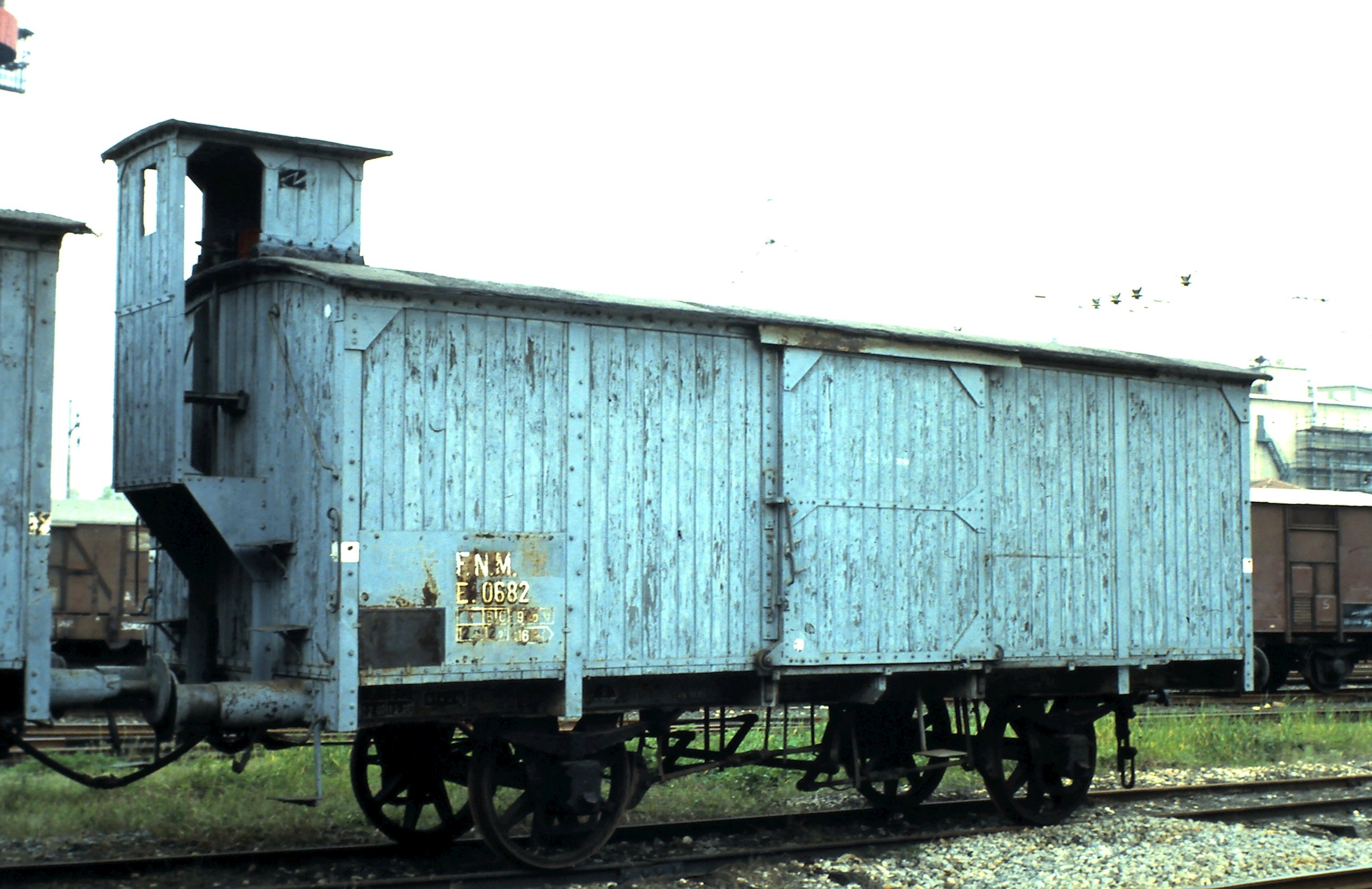The wagons in the Ef 0591-0715 series were built in several batches in Belgium between 1897 and 1907, and were largely similar, differing only in the presence or absence of ventilation hatches positioned high up on the sides of the body. They featured a large sliding door on each side for loading goods. The body was in wood, with vertically arranged interlocking boards secured to a metal framework. The chassis was a riveted steel structure. The roof was tarred wood. Like the other wagons, it was a two-axle vehicle with leaf spring suspension and double-spoke wheels. These wagons were characterised by the presence of a brakeman’s cab in an elevated position on one end. This was a small open compartment, covered by a roof in tarred canvas. It contained a wheel for operating the hand brake screw. It also featured a flip-down seat and on one of the walls there were windows without glass which could be closed with a sliding wooden panel. The Ef 0668 wagon is preserved at the MILS Museum in Saronno.
Ef 0668 wagon

- Progettazione: 1897
- Costruzione: 1897-1907
- Massa a vuoto: t.9
- Portata: t.12
- Massa in servizio: t.21
- Costruttore: Ind. De Louvain
- Lunghezza fuori tutto: 8.570 mm
- Passo rigido: 4.000 mm
- Velocita massima: 70 Km/h
- Ruote Ø: 1.060 mm
- Altezza imperiale: 3.500 mm
- Capacità: m³ 35,50
- Freno: a mano
- Conduttura risc. vapore: sì
- Livrea: grigio
- Design date: 1897
- Build date: 1897-1907
- Tare weight: 9 tons
- Load capacity: 12 tons
- Service mass: 21 tons
- Builder: Ind. De Louvain
- Overall length: 8,570 mm
- Rigid wheelbase: 4,000 mm
- Maximum speed: 70 Km/h
- Wheel Ø: 1,060 mm
- Roof height: 3,500 mm
- Load capacity: 35.50 m³
- Braking system: hand
- Steam heating duct: yes
- Livery: grey
The cargo area consisted of a floor in robust wooden boards secured to the metal frame. The walls inside, in interlocking tongue-and-groove boards, were reinforced by doubling with more boards fixed to the sides from the floor up to a certain height. The roof was in wooden planks supported by metal ribs and covered on the top by tarred sailcloth. These covers were regularly retouched by being brushed with hot melted tar. The sliding doors were fitted with bolts and bars along special rails that could be lifted, to protect staff during loading and unloading and when manoeuvring. Over time, the hand brake and brakeman’s cab were removed from some of the wagons in this series. They were fitted instead with air tubing to guarantee braking of the other wagons with a continuous brake in FNM goods compositions. Some of the wagons in the series were fitted with steam heating ducts as they were often used as a buffer car between locomotives and passenger trains.

